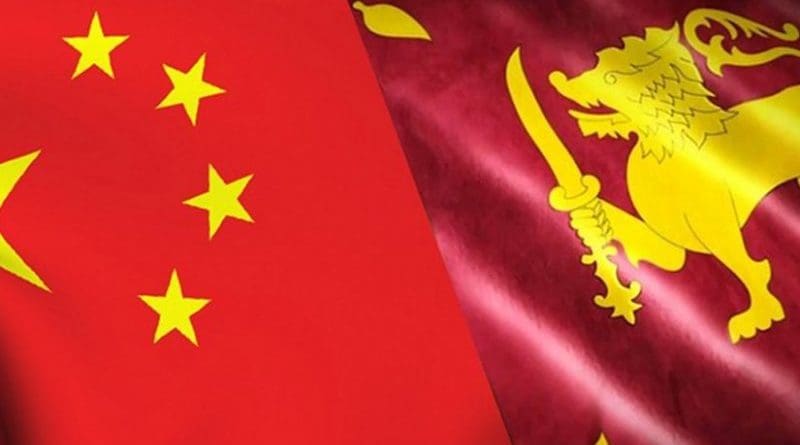The Sri Lankan Seesaw: Why China Tilts The Balance Against India – Analysis
By Husanjot Chahal*
Sri Lankan President Maithripala Sirisena paid a visit to India from May 13-15, 2016. This was his second state visit to the country in 17 months and was also his sixth meeting with the Indian Prime Minister Narendra Modi within the same span of time. His visit comes a month after the Sri Lankan Prime Minister (PM) Ranil Wickremesinghe travelled to China. Sirisena’s visit was viewed by many as a part of Sri Lanka’s delicate balancing of India and China. The new Sri Lankan government has been committed to this policy of balance from the very beginning after being sworn into power. In fact, one of its election platforms was revising Sri Lanka’s foreign policy, which had been oriented towards China under the previous government. It would be useful to understand what incorporates this approach of the Sri Lankan government and the underlying causes for its adoption. Has Colombo been able to achieve such a balance?
As highlighted earlier, bilateral relations between China and Sri Lanka reached new heights during the presidency of Mahinda Rajapaksa. Sri Lankan economy suffered as the government battled the Liberation Tigers of Tamil Eelam (LTTE). In such a scenario, China stepped in to help Sri Lanka economically and militarily through its no strings attached loans and military hardware supplies. While India and the West kept Colombo busy with questions on human rights violations, Beijing expanded its presence in the island through investments in big-ticket infrastructure projects.
However, January 2015 election campaign was considered by many to be a turning point. As highlighted by Sirisena during his election campaigns, the new government under him appeared committed to have balanced major power relations. Evidently, China’s flagship Colombo Port City Project was temporarily suspended citing regulatory and environment concerns. President Maithripala Sirisena undertook his first foreign trip to New Delhi where the two sides signed four agreements to strengthen bilateral ties. Indo-Lanka relations appeared to be warming up.
Apart from a change in leadership, this new outlook was because the Sri Lankan government felt it favours its own strategic interests. Nurturing a balance provides a robust foundation for preserving national security and sovereignty of Sri Lanka. Most importantly, Sri Lanka was a conflict stricken country that needed greater investment in infrastructure from other countries. As an upcoming dynamic economic power and Sri Lanka’s neighbour, India was naturally looked upon as a supplement to existing Chinese investments.
However, even with this changed outlook, one cannot say that a balance was achieved. The significant question, in fact, is – was it even possible to have a balance in the first place? To begin with, it is important to bear in mind that the very base of the balance has not been uniform. The possibility of having a balance is very difficult in an environment where one side has already signed significant deals and established a foundation for future investments. China’s early lead ensured its role in most of the big-ticket infrastructure projects in Sri Lanka, including the controversial Hambantota Port and the Colombo Port city project. After all these years of economic engagement, Sri Lanka owes China a sum of $8 billion. It is looking to trade this debt for financial stakes in its enterprises, which is only going to root the Chinese presence further.
On the other hand, India, which currently struggles to get an Economic and Technology Cooperation Agreement (ETCA) past Colombo’s government quarters, has most of its proposals only in a preliminary stage. For instance, where the Indian Trincomalee power project faces confusions over becoming a coal fired vs LNG plant, Chinese Norochcholai coal power plant has been supplying electricity islandwide since 2011.
In such a situation, to achieve a balance Sri Lanka will have to either scale down Chinese stakes, or increase India’s to bring them to the same level. Latter is not realistic for India as of now, the former means putting both relations with China as well as Sri Lankan economy at stake.
Further, the probability of having a balance is diminishing over time. Currently Sri Lanka is battling its economic woes and needs huge investments. In such a scenario, only the Chinese economic muscle can help. India, which had traditionally involved itself in reconstruction work in the Tamil north and east, can neither pick up its pace of investments, nor does it have the capability to match the humungous funding needs which Chinese deep pockets can finance.
This realisation has dawned on the Sri Lankan government who is now taking a pragmatic view of China. The last three months have seen both President Sirisena and Prime Minister Wickremesinghe travelling separately to China to seek economic help. The suspended Colombo Port City Project also resumed despite election promises of scrapping it completely.
All in all, even though the Sri Lankan government is attempting to not ‘put all its eggs in one basket’ by engaging with countries like India and Japan, it will be wrong to believe that a balance has existed or will exist in the near future. With increasing Western or Indian support, the reality may change, but for now, a balance is something not possible for Sri Lanka.
*Husanjot Chahal is a Research Officer at the Institute of Peace and Conflict Studies (IPCS), New Delhi. She can be reached at: [email protected]


The West and India will never replace China as our trusted friend. The rapacious West and the crooked India need to be watched from gobbling up Asri Lanka.